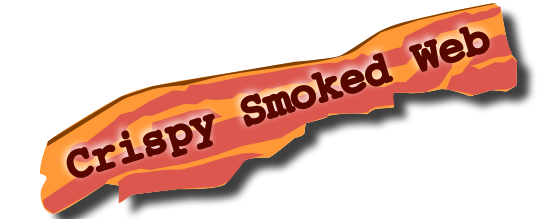This blog post is part of a graded assignment for the Coursera MOOC, Learning How to Learn.
As an older student, or lifelong learner, or simply someone stepping out of your normal trade to learn a knew skill, hobby, language, you may feel your mind is not up to the task, or that frequently the task of learning is just too great.
My study experiences, and in particular some new insights gained from the Coursera MOOC, Learning how to Learn, can demonstrate that this simply is not the case. You have all the faculties you need, and by understanding just some of the ways your brain learns best, applying them and, yes, some hard work, you will find that learning happens. Through this course I have learned why some of my studies have been so fruitless, and also understand why some of my efforts have been more successful. Now I know this I can apply them more directly and make my valuable study time more effective.
So my key insight is this – Let Learning happen!
That’s right, learning happens, alongside your actual learning efforts. You need to be familiar with and trust certain quirks of how your mind works, some and its natural processes. And sometimes you just need to step out of the way and drop the slavish study methods you thought would work.
Here are just three of the many quirks that really work, and how: Spaced repetition, Chunking and Diffuse thinking.
When you learn something completely new, especially something involving concepts or with no parallel to things you already know, your mind struggles to grasp many individual, seemingly disconnected facts and ideas. You just cannot hold them, and even if you could, you don’t see how they connect, and you also don’t have a mental hand free to use the whole thing to do anything useful. It’s like trying to hold all of your cooking ingredients loose in your arms at once and trying to follow the recipe to cook them at the same time. By approaching the subject several times, with breaks in between, re-reading, or practicing the technique, maybe using different sources and following many examples, working them out for yourself, you find that the loose collection of facts, methods, and concepts starts to make connections. Each of these “chunks” becomes easier to handle. The more you approach again, or practise the method, the more well-formed the chunks can become. Your mind can now hold whole parts of the combined idea in one mental hand, leaving your other limbs free to make use of this wonderful mental machine, or hold other ideas to make connections with. This is learning, but it takes a process of repeated exposure, from different sources, examples, and practise in applying them. If you focus too much on your need to learn the whole topic you may become overwhelmed. Just follow the materials again, rework them in your own words and mental language and let the learning happen.
It feels like magic, and the fact that you let the learning take care of itself, unburdens you from the fear of mental blocks. Trust me, this works. Focus your effort on these techniques against your chosen subject, and let the process of learning happen.
But there are even stranger aspects of our minds at work here. Sometimes you stare and stare at a paragraph or diagram, or worked example and you try to force it in. Your mind will resist – it’s giving you a clue here. Put it down, walk away, do something entirely different and do not let the frustration tell you you are a bad learner or that you are too stupid. Just walk away and let your mind engage it’s back-room learning-power – your diffuse mode of thinking. We try to wield the conscious and focused part of our mind as though it were our only tool. But there is hidden power up there too. While you do something else, maybe even go for a walk or take a nap, your diffuse mind caries on processing your thoughts, memories, trying to make sense and find patterns and connections. When you come back to your thorny problem you can find that your less conscious mind has presented some new perspective and understanding, the missing piece of your puzzle.
OK, sounds great, but what about an example?
My quest, documented on this blog, has been to learn some of what is really happening in technology, both in the trends and the way people use it, and the inner workings – how it works. As part of this I have been learning computer languages, for example JavaScript, which is used a lot to make web based applications work. This was completely alien to me, and there are concepts that are so far removed from any computer programming I learned two and half decades ago that I mostly had to unlearn all that. There are so many ideas, interrelated and dependent languages and mechanics in how a web page works, all changing very rapidly but each on their own tracks. Some of these frustrations are documented here.
It’s so intimidating, that I have to stop looking at it like an enormous wall of a challenge and pick a single brick. Then another, and then another, and then try to form connections. Initially there seem to be none, but they do come. To study I use online coding tutorials. Not just one, but a few different ones. I also read books, and support forums. This is the spaced repetition. And then comes the really powerful source. I try stuff out. This is where my connections get made. I pick a problem, just a small one, and try to solve it in code. I try to employ techniques of language features I learned about. If I get stuck I look up support forums for pointers. But it’s still always me writing the code in my way, forming my own connections and trying to work out why someone else’s solution is more efficient or more elegant than mine. This is where my chunks are formed.
But progress was slow and disjoint, and I struggled for motivation. Alongside my job, opportunities to study can be small and infrequent. The answer was “Code Everyday”: a commitment to myself that each day I will do a little bit, no matter how small and that I will write what I learned from doing it. It might be a big project that takes a month of daily bites, or little ten minute attempts at something new. This went OK, but then I still struggle to find motivation and examples. Help came from two great websites. Project Euler, which presents maths problems fro you to solve in code, and which will only accept a correct answer. These give a workout to my mathematical thinking and the skills in coding in a particular language. This meant I did not have to think of what to do, just how to do it, and how to consolidate the many disconnected bits of memory from my study. If I get stuck, I search for help with a particular kind of problem, like how to handle very large numbers in JavaScript for example. But the stitching together is all mine and the connection s that form are strong.
My second website is CodeWars, which is more friendly than it sounds. Here you pick your language and are set small but tricky problems to code right there in the website. There are always long, brute force methods to solve them, but it really encourages, short and elegant solutions which use feature of JavaScript that I may not have come across. There is help available in forums, and of course all the Javascript reference sites and forums online, but the only way to pass the test is to find your own solution. you then get to compare with other students’ work and see if you could have improved your work.
So what we have here is the use of spaced repetition to learn and apply bite size aspects of a hugely complex and highly conceptual subject, but learning those in context to form connections of how these work together (chunks). My mind increasingly is able to wield these chunks fluently, without having to think about how each little bit works. I just trust my own understanding. This is the power of chunking, repetition and trusting the process of diffuse learning, through time away from my studies. All three of these have worked for me, but I had not even realised until I took the course. It’s changed how I think about my own learning, and in some ways changed the burden of learning big new subjects, into the application of method to a new subject.
The key learning concepts (spaced repetition, chunking, and diffuse mode thinking) refer to ideas discussed in the materials of the Coursera MOOC, Learning how to Learn, by Barbara Oakley and Terrance Sejnowski.
“Brain Ache” image courtesy of TheBrownFolk on PhotoBucket.


No comments yet.